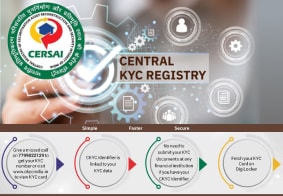CKYC Registry
-
Customer Service Contact us Service request Locate a branch
Find all the help you need
Scan the QR, get our app, and find help on your fingertips

Help CenterSupport topics, Contact us, FAQs and more
-
Login
Are you ready for an upgrade?
Login to the new experience with best features and services
-
Login
Are you ready for an upgrade?
Login to the new experience with best features and services
- Accounts
-
Deposits
IDFC FIRST Bank Deposits
View all Deposits -
Loans
IDFC FIRST Bank Loans
View all Loans - Wealth & Insure
-
Payments
IDFC FIRST Bank Payments
View all Payments -
Cards
IDFC FIRST Bank Cards
View all Cards - Blogs
- Corporate Account
-
Cash Management Services
IDFC FIRST Bank Cash Management Services
View all Cash Management Services - Supply Chain Finance
-
Corporate Lending
IDFC FIRST Bank Lending
View all -
Treasury
IDFC FIRST Bank Treasury
See more details - NBFC Financing
Support topics, Contact us, FAQs and more
- IDFC FIRST Bank Accounts
-
Savings Account
-
Corporate Salary
Account -
Senior Citizens
Savings Account -
First Power
Account -
Current Account
-
NRI Savings
Account -
TASC Institutional
Account -
Savings Account
Interest Calculator
- IDFC FIRST Bank Deposits
-
Fixed Deposit
-
Recurring Deposit
-
NRI Fixed Deposit
-
Safe Deposit Locker
-
FD Calculator
-
RD Calculator
- IDFC FIRST Bank Loans
-
Personal Loan
-
Consumer Durable
Loan -
Home Loan
-
Business Loan
-
Professional Loan
-
Education Loan
-
New Car Loan
-
Pre-owned Car Loan
-
Two Wheeler Loan
-
Pre-owned Two
Wheeler Loan -
Commercial Vehicle
Loan -
Gold Loan
-
Loan Against Property
-
Loan Against Securities
-
Easy Buy EMI card
-
Personal Loan
EMI Calculator -
Education Loan
EMI Calculator -
Home Loan
EMI Calculator -
EMI Calculator
-
Personal Loan Eligibility Calculator
- IDFC FIRST Bank Wealth & Insure
-
FIRST Select
-
FIRST Wealth
-
FIRST Private
-
Mutual Funds
-
Sovereign Gold Bond
-
Demat Account
-
Term Insurance
-
Life Insurance
-
Health Insurance
-
General Insurance
-
Bonds
-
Loan Against
Securities -
Portfolio Management
Service
- IDFC FIRST Bank Payments
-
FASTag
-
Credit Card
Bill Payments -
UPI
-
Funds Transfer
-
Forex Services
-
Pay Loan EMI
- IDFC FIRST Bank Cards
-
Ashva :
Metal Credit Card -
Mayura :
Metal Credit Card -
FIRST Millennia
Credit Card -
FIRST Classic
Credit Card -
FIRST Select
Credit Card -
FIRST Wealth
Credit Card -
FIRST WOW!
Credit Card -
Deals
-
Debit Cards
-
Co-branded Cards
-
Credit Card
EMI Calculator -
FIRST Corporate
Credit Card -
FIRST Purchase
Credit Card -
FIRST Business
Credit Card
- Premium Metal Credit Cards
-
AshvaLifestyle1% Forex₹2,999
-
MayuraLifestyleZero Forex₹5,999
-
FIRST PrivateInvite Only
- Best for travellers
-
MayuraZero ForexMetal₹5,999
-
Ashva1% ForexMetal₹2,999
-
FIRST WOW!Zero ForexTravelLifetime Free
-
FIRST SWYPTravel OffersEMI₹499
-
FIRST Select1.99% ForexLifestyleLifetime Free
-
FIRST Wealth1.5% ForexLifestyleLifetime Free
-
Club VistaraTravelLifestyle₹4,999
-
IndiGo IDFC FIRST Dual Credit CardTravelLifestyle₹4,999
- Max benefits, Free for life
-
FIRST Classic10X RewardsShoppingNever Expiring Rewards
-
FIRST Millennia10X RewardsShoppingNever Expiring Rewards
-
FIRST Select10X RewardsLifestyle1.99% Forex
-
FIRST Wealth10X RewardsLifestyle1.5% Forex
-
FIRST WOW!RewardsTravelZero Forex
-
LIC ClassicRewardsInsuranceShopping
-
LIC SelectRewardsInsuranceShopping
- Reward Multipliers
-
AshvaLifestyleMetal₹2,999
-
MayuraLifestyleZero Forex₹5,999
-
FIRST ClassicNever Expiring RewardsShoppingLifetime Free
-
FIRST MillenniaNever Expiring RewardsShoppingLifetime Free
-
FIRST SelectNever Expiring RewardsLifestyleLifetime Free
-
FIRST WealthNever Expiring RewardsLifestyleLifetime Free
- Rewards & Credit on UPI
-
FIRST Power+FuelUPI₹499
-
FIRST PowerFuelUPI₹199
-
FIRST EA₹NVirtual1% Cashback₹499
-
FIRST DigitalVirtualUPI₹199
-
IndiGo IDFC FIRST Dual Credit CardUPITravelDual cards
- Fuel and Savings
-
FIRST PowerRewardsUPI₹199
-
FIRST Power+RewardsUPI₹499
-
LIC ClassicRewardsInsuranceShopping
-
LIC SelectRewardsInsuranceShopping
- Express and Flaunt
-
AshvaMetal1% Forex₹2,999
-
MayuraMetalZero Forex₹5,999
-
FIRST SWYPEMIOfferMAX₹499
-
FIRST MillenniaRewardsShoppingLifetime Free
- FD Backed rewarding Credit Cards for all
-
FIRST EA₹NVirtualCashback₹499
-
FIRST WOW!Zero ForexTravelLifetime Free
-
CreditPro Balance TransferTransfer & SaveReduce InterestPay Smartly
- IDFC FIRST Bank NRI Forex Solutions
-
Send money to India-Wire transfer
-
Send money to India-Digitally
-
Send money abroad
-
Max Returns FD (INR)
- IDFC FIRST Bank MSME Accounts
-
Platinum Current
Account -
Gold
Current Account -
Silver Plus
Current Account -
Merchant Multiplier
Account -
Agri Multiplier
Account -
TASC Institutional
Account -
Dynamic Current
Account -
World business
Account -
First Startup
Current Account
- IDFC FIRST Bank Business Loans
-
Business Loan
-
Professional Loan
-
Loan Against Property
-
Business Loan for Women
-
Working Capital Loan
-
Construction Equipment Loan
-
Machinery Loan
-
Healthcare Equipment Loan
- IDFC FIRST Bank Business Solutions
-
Payment Solutions
-
Tax Payments
-
Doorstep Banking
-
Point of Sale (POS)
-
Escrow Accounts
-
NACH
-
Payment Gateway
-
UPI
-
Virtual Accounts
-
As per amendment in the Income Tax Rules, PAN or Aadhaar are to be mandatorily quoted for cash deposit or withdrawal aggregating to Rupees twenty lakhs or more in a FY. Please update your PAN or Aadhaar. Kindly reach out to the Bank’s contact center on 1800 10 888 or visit the nearest IDFC FIRST Bank branch for further queries.
-
-
Most Searched
Sorry!
We couldn’t find ‘’ in our website
Here is what you can do :
- Try checking the spelling and search
- Search from below suggestions instead
- Widen your search & try a more generic keyword
Suggested
Get a Credit Card
Enjoy Zero Charges on All Commonly Used Savings Account Services
Open Account Now


Approximate Tax Breakup
| Taxable Income | OLD Regime |
|---|---|
| Rs. 0 to Rs. 2.5L | 0% |
| Taxable Income | NEW Regime |
|---|---|
| Rs. 0 to Rs. 3L | 0% |
| Rs 1 | 0% |
Income Tax Calculator
With the new tax slabs out for the fiscal year 2025-26, (Assessment Year 2026-27), understanding your take-home pay after tax deductions is crucial for financial planning. Whether you are considering a new job offer or reviewing your current salary deductions as per the latest tax slabs, having access to an income tax calculator aligned with the updated tax rates can provide valuable insights. It can help you determine how much money you will actually receive and if your deductions fall within the normal tax bracket. With this information, you can make informed decisions about your finances and budget accordingly.
The IDFC FIRST Bank income tax calculator is a user-friendly online tool designed to help you calculate your income tax effortlessly. It allows you to input your salary details and other relevant financial information to get an accurate estimate of your tax liability. This calculator is particularly useful for those looking to compare tax liabilities under both the old and new tax regimes, making it easier to plan your finances effectively. Read
more
What is an income tax calculator?
An income tax calculator is an online tool that enables you to calculate your income tax based on your salary and other taxable income. It considers various factors such as deductions, exemptions, and applicable tax slabs to provide an accurate tax estimate. The IDFC FIRST Bank income tax calculator, specifically tailored for Indian taxpayers, simplifies the tax computation process, ensuring that you stay informed about your tax obligations for the assessment year 2026-27. Whether you are under the old tax regime or the new regime, this calculator provides precise results, helping you make informed financial decisions.

How to Use the Online Income Tax Calculator?
Using the IDFC FIRST Bank online income tax calculator is a straightforward process. Here’s how you can use it:
-
1
Enter your basic details:
Input your details such as income from all sources like HRA, basic salary, allowances, etc. and investments.
-
2
Input deductions and exemptions:
For the old regime, enter deductions like Section 80C, 80D in the investment section.
-
3
Review tax computation:
The calculator will automatically compute your tax liability based on the information provided.
-
4
View the results:
Get a clear breakdown of your tax liability, including the total tax payable.
-
5
Choose the tax regime:
Select whether you want to calculate your tax under the old or new tax regime.
How to Understand Income Tax Slabs
Income tax slabs are a crucial part of the Indian tax system. They determine the rate at which your income is taxed based on your total income in a financial year. The slabs are divided into different brackets, with varying tax rates applied to different levels of income.
Old tax regime
The old tax regime offers various deductions and exemptions such as under Sections 80C, 80D, and 24(b). The tax slabs are progressive, with rates increasing as income increases. For instance, for individuals below 60 years,
• Income up to ₹2.5 lakhs is tax-free
• Income between ₹2.5 lakhs to ₹5 lakhs is taxed at 5%
• Income between ₹5 lakhs to ₹10 lakhs is taxed at 20%
• Income above ₹10 lakhs is taxed at 30%
New tax regime (FY 2025-26)/ (AY 2026-27)
The new tax regime introduced simplified tax slabs with lower rates but without the option for most deductions and exemptions. Under the new tax regime for FY 2025-26 (AY 2026-27), for an annual income of up to ₹12.75 lakhs, individuals are eligible for a rebate under Section 87A. The income tax slabs are as follows.
• No tax liability for income of up to ₹4 lakhs
• 5% tax for income between 4,00,001 to 8,00,000
• 10% tax for income between 8,00,001 to 12,00,000
• 15% tax for income between 12,00,001 to 16,00,000
• 20% tax for income between 16,00,001 to 20,00,000
• 25% tax for income between 20,00,001 to 24,00,000
• 30% tax for income above 24,00,000
Old tax regime
The old tax regime offers various deductions and exemptions such as under Sections 80C, 80D, and 24(b). The tax slabs are progressive, with rates increasing as income increases. For instance, for individuals below 60 years,
• Income up to ₹2.5 lakhs is tax-free
• Income between ₹2.5 lakhs to ₹5 lakhs is taxed at 5%
• Income between ₹5 lakhs to ₹10 lakhs is taxed at 20%
• Income above ₹10 lakhs is taxed at 30%
New tax regime (FY 2025-26)/ (AY 2026-27)
The new tax regime introduced simplified tax slabs with lower rates but without the option for most deductions and exemptions. Under the new tax regime for FY 2025-26 (AY 2026-27), for an annual income of up to ₹12.75 lakhs, individuals are eligible for a rebate under Section 87A. The income tax slabs are as follows.
• No tax liability for income of up to ₹4 lakhs
• 5% tax for income between 4,00,001 to 8,00,000
• 10% tax for income between 8,00,001 to 12,00,000
• 15% tax for income between 12,00,001 to 16,00,000
• 20% tax for income between 16,00,001 to 20,00,000
• 25% tax for income between 20,00,001 to 24,00,000
• 30% tax for income above 24,00,000
How to Calculate the Total Income Tax Liability using the Income Tax Calculator (FY 25-26)/ (AY 2026-27)
Let’s consider an example of an individual with an annual salary of ₹15 lakhs and investments worth ₹2 lakhs. Here’s how the tax would be calculated under both regimes:
Old Tax Regime

| Gross income: | ₹15,00,000 |
| Deductions (80C, 80D, etc.): | ₹2,00,000 |
| Standard deduction | ₹50,000 |
| Net taxable income: | ₹12,50,000 |
| Tax slabs under old regime: | |
| Up to ₹2.5 lakh: | Nil |
| ₹2.5 lakh to ₹5 lakh: | 5% |
| ₹5 lakh to ₹10 lakh: | 20% |
| Above ₹10 lakh: | 30% |
Tax payable:
| Income up to ₹2.5 lakh: | Nil |
| Income from ₹2.5 lakh to ₹5 lakh: 5% of ₹2.5 lakh = | ₹12,500 |
| Income from ₹5 lakh to ₹10 lakh: 20% of ₹5 lakh = | ₹1,00,000 |
| Income from ₹10 lakh to ₹13 lakh: 30% of ₹2.5 lakh = | ₹75,000 |
| Total tax payable:₹12,500 + ₹1,00,000 + ₹75,000 = | ₹1,87,500 |
| Cess (4% on ₹2,02,500): | ₹7,500 |
Total Tax Liability
₹1,95,000
New Tax Regime

| Gross income: | ₹15,00,000 |
| Deductions (80C, 80D, etc.): | NIL |
| Standard deduction | ₹75,000 |
| Net taxable income: | ₹14,25,000 |
| Tax slabs under new regime: | |
| Up to ₹4 lakh: | Nil |
| ₹4 lakh to ₹8 lakh: | 5% |
| ₹8 lakh to ₹12 lakh: | 10% |
| ₹12 lakh to ₹16 lakh: | 15% |
| ₹16 lakh to ₹20 lakh: | 20% |
| ₹20 lakh to ₹24 lakh: | 25% |
| Above ₹24 lakh: | 30% |
Tax payable:
| Income up to ₹4 lakh: | Nil |
| Income from ₹4 lakh to ₹8 lakh : 5% of ₹4 lakh = | ₹20,000 |
| Income from ₹8 lakh to ₹12 lakh: 10% of ₹4 lakh = | ₹40,000 |
| Income from ₹12 lakh to ₹16 lakh : 15% of ₹2.25 lakh = | ₹33,750 |
| Total tax payable: ₹20,000 + ₹40,000 + ₹33,750 = | ₹93,750 |
| Cess (4% on ₹93,750): | ₹3,750 |
Total Tax Liability
₹ 97,500
The above calculation is for illustrative purposes only. Tax liability for individuals may vary depending on various allowances and other income sources.
The IDFC FIRST Bank income tax calculator simplifies this process, offering a clear comparison between the old and new regimes, allowing you to make an informed decision.
| Taxable Income | OLD Regime |
|---|---|
| ₹0 to ₹2.5L | 0% |
| Taxable Income | NEW Regime |
|---|---|
| ₹0 to ₹4L | 0% |
Benefits of Income Tax Calculator

Accuracy
The IDFC FIRST Bank income tax calculator provides accurate tax estimates.

Ease of use
It simplifies tax calculations, even for those unfamiliar with tax laws.

Comparison tool
Easily compare tax liabilities under old and new regimes.

Time-saving
Avoid manual calculations and get instant results.

Financial planning
Helps in effective financial planning by providing clear tax liabilities.

Accessibility
Available online, the calculator can be accessed anytime, anywhere.
Frequently asked question
How much tax should I pay on my salary in the new regime?
Under the new tax regime FY 2025-26, the tax you pay depends on your salary and the applicable income slabs. For instance, if your salary is ₹15 lakhs, you would pay a total tax of ₹97,500 including cess, with limited deductions or exemptions. You can easily determine your tax liability using the IDFC FIRST Bank income tax calculator, which provides accurate calculations based on the latest tax slabs.
How can I calculate my income tax?
Calculating your income tax is simple with the IDFC FIRST Bank income tax calculator. Enter your annual salary and investments, the calculator will instantly compute your tax liability and best tax regime. It factors in the current tax slabs and provides an accurate breakdown of your payable taxes. For manual calculation, refer to the tax slab rates and apply them to your taxable income. Here are the latest tax slabs:
• No tax liability for income of up to ₹4 lakhs
• 5% tax for income between 4,00,001 to 8,00,000
• 10% tax for income between 8,00,001 to 12,00,000
• 15% tax for income between 12,00,001 to 16,00,000
• 20% tax for income between 16,00,001 to 20,00,000
• 25% tax for income between 20,00,001 to 24,00,000
• 30% tax for income above 24,00,000
How much tax will be deducted from my salary?
The tax deducted from your salary, known as TDS (Tax Deducted at Source), depends on your income and applicable deductions. Your employer usually deducts TDS based on your estimated annual income and the tax regime you choose. The IDFC FIRST Bank income tax calculator can help you estimate the tax that will be deducted from your salary.
Does everyone have to file their income tax returns?
Yes, if your total income exceeds the basic exemption limit (₹2.5 lakh in the old regime and ₹4 lakh in the new regime), you must file income tax returns. Filing is mandatory even if no tax is payable after deductions.
How much income is tax-free?
Under the new tax regime (FY 25-26), income of up to ₹4 lakhs is non-taxable. However, individuals earning an annual income of up to ₹12.75 lakhs are eligible for rebate under Section 87A, thus making their tax liability zero.
Does the income tax calculator calculate TDS also?
Yes, the IDFC FIRST Bank income tax calculator considers TDS when calculating your total tax liability. Enter your salary details, and the calculator will estimate the TDS that should be deducted.
Approximate Tax Breakup
| Taxable Income | OLD Regime |
|---|---|
| ₹0 to ₹2.5L | 0% |
| ₹2.5L to ₹5L | 5% |
| ₹5L to ₹10L | 20% |
| ₹10L | 30% |
| Taxable Income | NEW Regime |
|---|---|
| ₹0 to ₹3L | 0% |
| ₹3L to ₹7L | 5% |
| ₹7L to ₹10L | 10% |
| ₹10L to ₹12L | 15% |
| ₹12L to ₹15L | 20% |
| > ₹15L | 30% |
Income Tax Calculator
Understanding your take-home pay after tax deductions is crucial for financial planning. Whether you are considering a new job offer or reviewing your current salary deductions, having access to an income tax calculator can provide valuable insights. It can help you determine how much money you will actually receive and if your deductions fall within the normal tax bracket. With this information, you can make informed decisions about your finances and budget accordingly. The IDFC FIRST Bank income tax calculator is a user-friendly online tool designed to help you calculate your income tax effortlessly. It allows you to input your salary details and other relevant financial information to get an accurate estimate of your tax liability. This calculator is particularly useful for those looking to compare tax liabilities under both the old and new tax regimes, making it easier to plan your finances effectively. Read more
What is Income Tax Calculator
An income tax calculator is an online tool that enables you to calculate your income tax based on your salary and other taxable income. It considers various factors such as deductions, exemptions, and applicable tax slabs to provide an accurate tax estimate. The IDFC FIRST Bank income tax calculator, specifically tailored for Indian taxpayers, simplifies the tax computation process, ensuring that you stay informed about your tax obligations for the assessment year 2024-25. Whether you are under the old tax regime or the new regime, this calculator provides precise results, helping you make informed financial decisions.

How to Use the Online Income Tax Calculator?
Using the IDFC FIRST Bank online income tax calculator is a straightforward process. Here’s how you can use it:
-
1
Enter your basic details
Input your details such as income from all sources like HRA, basic salary, allowances, etc. and investments.
-
2
Input deductions and exemptions
For the old regime, enter deductions like Section 80C, 80D in the investment section.
-
3
Review tax computation
The calculator will automatically compute your tax liability based on the information provided.
-
4
View the results
Get a clear breakdown of your tax liability, including the total tax payable.
-
5
Choose the tax regime
Select whether you want to calculate your tax under the old or new tax regime.
How to Understand Income Tax Slabs
Income tax slabs are a crucial part of the Indian tax system. They determine the rate at which your income is taxed based on your total income in a financial year. The slabs are divided into different brackets, with varying tax rates applied to different levels of income.
Old tax regime
The old tax regime offers various deductions and exemptions such as under Sections 80C, 80D, and 24(b). The tax slabs are progressive, with rates increasing as income increases. For instance, for individuals below 60 years, income up to ₹2.5 lakhs is tax-free, income between ₹2.5 lakhs to ₹5 lakhs is taxed at 5%, ₹5 lakhs to ₹10 lakhs at 20%, and above ₹10 lakhs at 30%.
New tax regime
The new tax regime introduced simplified tax slabs with lower rates but without the option for most deductions and exemptions. The slabs start with a 5% tax on income between ₹3 lakhs to ₹7 lakhs, 10% on ₹7 lakhs to ₹10 lakhs, 15% on ₹10 lakhs to ₹12 lakhs, 20% on ₹12 lakhs to ₹15 lakhs, and 30% on income above ₹15 lakhs.
Old tax regime
New tax regime
How to Calculate the Total Income Tax Liability using the Income Tax Calculator for New Regime and Old Regime
To accurately calculate your total income tax liability using the IDFC FIRST Bank income tax calculator, follow these steps for both the old and new regimes:
Old tax regime

| Gross income: | ₹15,00,000 |
| Deductions (80C, 80D, etc.): | ₹2,00,000 |
| Standard deduction | ₹50,000 |
| Net taxable income: | ₹ 12,50,000 |
| Tax slabs under old regime: | |
| Up to ₹2.5 lakh: | Nil |
| ₹2.5 lakh to ₹5 lakh: | 5% |
| ₹5 lakh to ₹10 lakh: | 20% |
| Above ₹10 lakh: | 30% |
Tax payable:
| Income up to ₹2.5 lakh: | Nil |
| Income from ₹2.5 lakh to ₹5 lakh: 5% of ₹2.5 lakh = | ₹12,500 |
| Income from ₹5 lakh to ₹10 lakh: 20% of ₹5 lakh = | ₹1,00,000 |
| Income from ₹10 lakh to ₹13 lakh: 30% of ₹2.5 lakh = | ₹75,000 |
| Total tax payable:₹12,500 + ₹1,00,000 + ₹75,000 = | ₹ 1,87,500 |
| Cess (4% on ₹2,02,500): | ₹ 7,500 |
Total Tax Liability
₹ 1,95,000
New tax regime

| Gross income: | ₹ 15,00,000 |
| Deductions (80C, 80D, etc.): | NIL |
| Standard deduction | ₹ 75,000 |
| Net taxable income: | ₹ 14,25,000 |
| Tax slabs under new regime: | |
| Up to ₹3 lakh: | Nil |
| ₹3 lakh to ₹7 lakh: | 5% |
| ₹7 lakh to ₹10 lakh: | 10% |
| ₹10 lakh to ₹12 lakh: | 15% |
| ₹12 lakh to ₹15 lakh: | 20% |
| Above ₹15 lakh: | 30% |
Tax payable:
| Income up to ₹3 lakh: | Nil |
| Income from ₹3 lakh to ₹7 lakh (₹4 lakh taxable): 5% of ₹4 lakh = | ₹ 20,000 |
| Income from ₹7 lakh to ₹10 lakh (₹3 lakh taxable): 10% of ₹3 lakh = | ₹ 30,000 |
| Income from ₹10 lakh to ₹12 lakh (₹2 lakh taxable): 15% of ₹2 lakh = | ₹ 30,000 |
| Income from ₹12 lakh to ₹15 lakh (₹2.25 lakh taxable): 20% of ₹2.25 lakh = | ₹ 45,000 |
| Total tax payable: ₹20,000 + ₹30,000 + ₹30,000 + ₹45,000 = | ₹ 1,25,000 |
| Cess (4% on ₹1,25,000): | ₹ 5,000 |
Total Tax Liability
₹ 1,30,000
| Taxable Income | OLD Regime |
|---|---|
| ₹0 to ₹2.5L | 0% |
| ₹2.5L to ₹5L | 5% |
| ₹5L to ₹10L | 20% |
| > ₹10L | 30% |
| Taxable Income | NEW Regime |
|---|---|
| ₹0 to ₹3L | 0% |
| ₹3L to ₹7L | 5% |
| ₹7L to ₹10L | 10% |
| ₹10L to ₹12L | 15% |
| ₹12L to ₹15L | 20% |
| > ₹15L | 30% |
The above calculation is for illustrative purposes only. Tax liability for individuals may vary depending on various allowances and other income sources.
The IDFC FIRST Bank income tax calculator simplifies this process, offering a clear comparison between the old and new regimes, allowing you to make an informed decision.
Benefits of Income Tax Calculator

Accuracy
The IDFC FIRST Bank income tax calculator provides accurate tax estimates.

Ease of use
It simplifies tax calculations, even for those unfamiliar with tax laws.

Comparison tool
Easily compare tax liabilities under old and new regimes.

Time-saving
Avoid manual calculations and get instant results.

Financial planning
Helps in effective financial planning by providing clear tax liabilities.

Accessibility
Available online, the calculator can be accessed anytime, anywhere.
Frequently asked question
How much tax should I pay on my salary in the new regime?
Under the new tax regime, the tax you pay depends on your salary and the applicable income slabs. For instance, if your salary is ₹15 lakhs, you would pay a total tax of ₹1,45,600, including cess, without claiming any deductions or exemptions. You can easily determine your tax liability using the IDFC FIRST Bank income tax calculator, which provides accurate calculations based on the latest tax slabs.
How can I calculate my income tax?
Calculating your income tax is simple with the IDFC FIRST Bank income tax calculator. Enter your annual salary and investments, the calculator will instantly compute your tax liability and best tax regime. It factors in the current tax slabs and provides an accurate breakdown of your payable taxes. For manual calculation, refer to the tax slab rates and apply them to your taxable income.
How much tax will be deducted from my salary?
The tax deducted from your salary, known as TDS (Tax Deducted at Source), depends on your income and applicable deductions. Your employer usually deducts TDS based on your estimated annual income and the tax regime you choose. The IDFC FIRST Bank income tax calculator can help you estimate the tax that will be deducted from your salary.
Does everyone have to file their income tax returns?
Yes, if your total income exceeds the basic exemption limit (₹2.5 lakh in the old regime and ₹3 lakh in the new regime), you must file income tax returns. Filing is mandatory even if no tax is payable after deductions.
How much income is tax-free?
In the new tax regime, income up to ₹3 lakh is tax-free. In the old regime, the basic exemption limit is ₹2.5 lakh. You can check your tax-free income using the IDFC FIRST Bank income tax calculator.
Does the income tax calculator calculate TDS also?
Yes, the IDFC FIRST Bank income tax calculator considers TDS when calculating your total tax liability. Enter your salary details, and the calculator will estimate the TDS that should be deducted.
What are the details you need when you're e-filing your income tax returns?
For e-filing your income tax returns, you'll need details such as your PAN, Form 16, bank statements, details of deductions (under sections like 80C, 80D), and income from other sources. The IDFC FIRST Bank income tax calculator can help you gather necessary information by providing a detailed tax computation.










